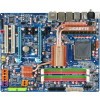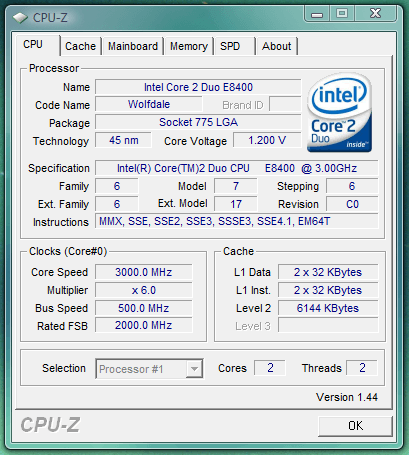- Qualcomm Launches Snapdragon 4 Gen 2 Mobile Platform
- AMD Launches Ryzen PRO 7000 Series Mobile & Desktop Platform
- Intel Launches Sleek Single-Slot Arc Pro A60 Workstation Graphics Card
- NVIDIA Announces Latest Ada Lovelace Additions: GeForce RTX 4060 Ti & RTX 4060
- Maxon Redshift With AMD Radeon GPU Rendering Support Now Available
Gigabyte GA-X48T-DQ6

Building a new machine and want DDR3 support? Then the X48T-DQ6 should be up for consideration. It offers great performance, very stable high overclocks (500MHz) and lots of connectivity, including a full eight USB ports at the back. The layout is not ideal, but the board still proves good overall.
Page 9 – Overclocking & Power Consumption
Hitting a high FSB used to be difficult, but it’s not so much of a problem now with the advent of killer chipsets that can handle the strain. My immediate goal with any new motherboard is to hit at least 500MHz, as it’s a definite sweet-spot. At that point, DDR3-2000 speeds are possible, as well as incredible potential with any CPU. Even with CPUs that offer a lackluster 7x multiplier, 500MHz could give you a sweet 3.5GHz clock speed, as long as the CPU could handle it.
As we expected, the X48T-DQ6 had no problem whatsoever hitting our goal. With the FSB voltage in the BIOS cranked up to max (which is still moderate by comparison to other motherboards), 500MHz proved 20-hours stable with our Dual-Core E8400. With our QX9650 Quad-Core, 465MHz was deemed stable – a tad lower than other boards I’ve used recently, but still very respectable.

Going over 500MHz with the Dual-Core was not successful, though. At 510MHz, regardless of the voltage, the OS would not boot properly. It’s surprising what a difference 10MHz can make, but it was clear to me that no amount of voltage was going to help things here. While the board lacks in a top-end overclock, it at least it is extremely stable at 500MHz.
Power Consumption
To capture power consumption, we use a Kill-A-Watt which is plugged directly into the wall, with our PC plugged into it. The monitor and speakers are plugged into a different socket, so our figures here show what our entire PC draw is and nothing else.
Please note that these figures include the Corsair Nautilus 500 water-cooling system, as it feeds off of our computers power. Only one hard drive is plugged in during this testing, and the lone accessory used is a RAM fan. The network adapters are enabled, but no LAN cable is plugged in.
We test grab figures while the machine is idle, and also when the machine is utilizing half of the CPU (QX9650). We then continue to let the 50% CPU usage continue while we load up 3DMark Vantage, to grab a realistic from normal usage. In this case, it would assume playing a game that happens to utilize the CPU well.

All of the boards performed quite well here, with the Rampage Formula surpasses all the others, although not by much. The X48T-DQ6 had the highest top-end wattage with everything except the idle. The DES didn’t seem to help much here.
|
|
Support our efforts! With ad revenue at an all-time low for written websites, we're relying more than ever on reader support to help us continue putting so much effort into this type of content. You can support us by becoming a Patron, or by using our Amazon shopping affiliate links listed through our articles. Thanks for your support!





